So I am hacking an old 2.1 pc system for the amp and sub (altec lansing 621, screen shot of specs below) and using the dayton audio rs100-4 as the satellites. I am enclosing all of the components into one box to build my take on the symbol audio tabletop hifi. I have found lots on info about enclosures for the rs100-4 and they look to be a good match as the original system used 3" sat.s as well so the crossover should be in about the right place.
My question is how do I understand the existing sub's ported box dimensions in order to recalculate them for the new enclosure. There is a ported box that vents into a cavity that contains the amp and heatsink, that then vents to the outside through a larger vent. I am guessing that the driver's box port "sees" the cavity as the outside air and that the cavity dimensions and "port" to the outside are irrelevant. Please correct me, shine some light on the design, or give any suggestions for box dimensions for the sub or the rs100-4s.
Also, at the risk of opening up another can of worms!!!! I am curious about port placement and proportions/ratios of the internal divisions for the rs100-4 drivers and the sub. I have some specific dimensions to work with for the exterior, but inside is flexible. If all of the ports exit out the rear will that be very bad,or should the down firing sub have a down firing port and leave the rs100-4's to rear port? This is obviously not going to be an ideal arrangement anyway, with all of the drivers in the same box, and the salvaged amp, but I am curious. For example, would a roughly square face and a deeper width greatly effect the rs100's as the enclosure dimensions would not be in the golden ratio?
I know I have asked a bunch and probably failed to qualify most of it. This "project" started about 2 months ago as a weekend, order the parts, slap together a box and have a little tabletop stereo. But then I started researching after I quickly realized I had no idea what I was doing. So the past 2 months have been spent dredging this fine forum, instead of doing homework (like right now!!!) and I have answered most of my questions except this one by just searching every variation of wording I could think of and following link after link. So thank you all for this amazing resource, and a new addiction.
My question is how do I understand the existing sub's ported box dimensions in order to recalculate them for the new enclosure. There is a ported box that vents into a cavity that contains the amp and heatsink, that then vents to the outside through a larger vent. I am guessing that the driver's box port "sees" the cavity as the outside air and that the cavity dimensions and "port" to the outside are irrelevant. Please correct me, shine some light on the design, or give any suggestions for box dimensions for the sub or the rs100-4s.
Also, at the risk of opening up another can of worms!!!! I am curious about port placement and proportions/ratios of the internal divisions for the rs100-4 drivers and the sub. I have some specific dimensions to work with for the exterior, but inside is flexible. If all of the ports exit out the rear will that be very bad,or should the down firing sub have a down firing port and leave the rs100-4's to rear port? This is obviously not going to be an ideal arrangement anyway, with all of the drivers in the same box, and the salvaged amp, but I am curious. For example, would a roughly square face and a deeper width greatly effect the rs100's as the enclosure dimensions would not be in the golden ratio?
I know I have asked a bunch and probably failed to qualify most of it. This "project" started about 2 months ago as a weekend, order the parts, slap together a box and have a little tabletop stereo. But then I started researching after I quickly realized I had no idea what I was doing. So the past 2 months have been spent dredging this fine forum, instead of doing homework (like right now!!!) and I have answered most of my questions except this one by just searching every variation of wording I could think of and following link after link. So thank you all for this amazing resource, and a new addiction.
Attachments
-
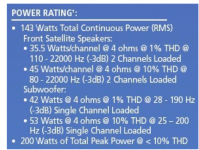 Screen Shot 2013-02-09 at 8.53.56 PM.png413 KB · Views: 318
Screen Shot 2013-02-09 at 8.53.56 PM.png413 KB · Views: 318 -
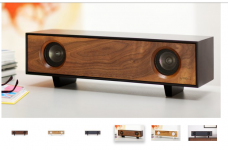 Screen Shot 2012-12-18 at 8.29.11 PM.png220.8 KB · Views: 312
Screen Shot 2012-12-18 at 8.29.11 PM.png220.8 KB · Views: 312 -
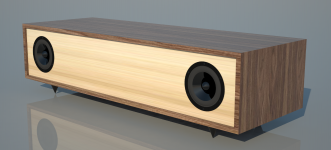 Screen Shot 2013-02-09 at 8.52.19 PM.png769.1 KB · Views: 312
Screen Shot 2013-02-09 at 8.52.19 PM.png769.1 KB · Views: 312 -
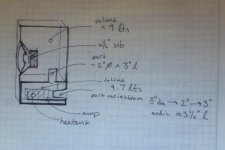 Photo on 2-9-13 at 8.51 PM.jpg138.7 KB · Views: 296
Photo on 2-9-13 at 8.51 PM.jpg138.7 KB · Views: 296 -
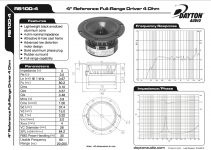 Screen Shot 2013-02-09 at 8.58.10 PM.png336.8 KB · Views: 307
Screen Shot 2013-02-09 at 8.58.10 PM.png336.8 KB · Views: 307
Greets!
Each driver should have its own isolated chamber and since each will be acoustically small over most/all of its intended BW, the shape, port location is irrelevant except possibly the sub’s vent since it will depend on where the system will set and how much its main vent is likely to be energized. Any mids, HF reflections will be damped with stuffing or at least by lining the top, back and one side wall of the main chambers.
The size of the cavities, port shape, etc., of the sub is important, so Google 'double bass reflex' for info about the sub's alignment. Ditto its double flared vent.
Theoretically, it’s best overall to measure the woofer's T/S specs to consider alternate alignments that may better 'fit' the needs of your app.
Then again, if the sub performs acceptably, then duplicating its design into a different shape may be a viable option.
GM
Each driver should have its own isolated chamber and since each will be acoustically small over most/all of its intended BW, the shape, port location is irrelevant except possibly the sub’s vent since it will depend on where the system will set and how much its main vent is likely to be energized. Any mids, HF reflections will be damped with stuffing or at least by lining the top, back and one side wall of the main chambers.
The size of the cavities, port shape, etc., of the sub is important, so Google 'double bass reflex' for info about the sub's alignment. Ditto its double flared vent.
Theoretically, it’s best overall to measure the woofer's T/S specs to consider alternate alignments that may better 'fit' the needs of your app.
Then again, if the sub performs acceptably, then duplicating its design into a different shape may be a viable option.
GM
My question is how do I understand the existing sub's ported box dimensions in order to recalculate them for the new enclosure. There is a ported box that vents into a cavity that contains the amp and heatsink, that then vents to the outside through a larger vent. I am guessing that the driver's box port "sees" the cavity as the outside air and that the cavity dimensions and "port" to the outside are irrelevant. Please correct me, shine some light on the design, or give any suggestions for box dimensions for the sub or the rs100-4s.
Hi,
No. Sounds like a 6th order bandpass and the front cavity volume and
port dimensions to the outside are critical to the 2nd order lowpass.
The tuning of the high pass is complicated by the fact the two ports
add together to get the tuning of the vented rear section cavity.
rgds, sreten.
Last edited:
Get a copy of WinISD bass reflex design software and design your own 4th order bass reflex cabinet with a new 6.5 in Dual voice coil (dvc) woofer if you can't get TS params for the existing woofer. Go with sealed cabinets for the RS100's. If you want to port them, use WinISD to design BR with appropriate low freq corner to match what you are doing with sub. You are not saving yourself a lot by going with the altec's amp. A new Class D amp board is $20, and $40 for a 4 ch one which you can power sub with. Looks like fun 
If you are really stuck on using original sub and amp, copy box exactly volume and port dimension wise into your new box. Pull the port tubes off the old sub enclosure and utilize them on your new one. I would make sub down firing and vent back firing.
If you are really stuck on using original sub and amp, copy box exactly volume and port dimension wise into your new box. Pull the port tubes off the old sub enclosure and utilize them on your new one. I would make sub down firing and vent back firing.
Last edited:
Thank you all for the great advice. The reason I am stuck on the altec driver and amp is that I bought it for $8 and will be trying to get everything in under $100, rs100-4, stuffing, wood, hardware, etc... I know there will be many more projects to go, when there is space and money for them. Plus I can always open it back up for a new amp later!
GM, I have tried to find the T/S parameters to redesign the subs enclosure but could find nothing. The sub is pretty boomy (maybe for gaming special effects, not music) when its level (gain?) control is above 15-20%, so I was considering recalculating the enclosure to not have the artificial lows, to keep it tighter for music listening. But if I keep the level low its fine.
sreten, thank you for the specific's to help me further read up!
xrk971, I will be using this sub and keeping the same box volumes and ports as you suggest. You mentioned sealed for the "satellites" any particular reason? Most everything else I have read about these suggested ported, but then again that's why I'm asking for advice. If I make them sealed any suggestions on dimensions, or free software to model them (just downloaded WinISD and the graph doesn't go above 1kHz and I can't figure out how to raise it). Also, with the down firing sub and read firing vent, their orientation will be off 90 degrees from the current altec design: front firing, rear venting. and the volume would be the same but the cavity proportions and orientations would differ. would this be fine as long as volume and port dim.s are the same?
again thank you all, I will post pics as the project moves forward. I have just been 3d modeling and rendering it to get the look right and only just started on the enclosure in the wood shop at UC Berkeley. So it should pick up speed in the next few days.
GM, I have tried to find the T/S parameters to redesign the subs enclosure but could find nothing. The sub is pretty boomy (maybe for gaming special effects, not music) when its level (gain?) control is above 15-20%, so I was considering recalculating the enclosure to not have the artificial lows, to keep it tighter for music listening. But if I keep the level low its fine.
sreten, thank you for the specific's to help me further read up!
xrk971, I will be using this sub and keeping the same box volumes and ports as you suggest. You mentioned sealed for the "satellites" any particular reason? Most everything else I have read about these suggested ported, but then again that's why I'm asking for advice. If I make them sealed any suggestions on dimensions, or free software to model them (just downloaded WinISD and the graph doesn't go above 1kHz and I can't figure out how to raise it). Also, with the down firing sub and read firing vent, their orientation will be off 90 degrees from the current altec design: front firing, rear venting. and the volume would be the same but the cavity proportions and orientations would differ. would this be fine as long as volume and port dim.s are the same?
again thank you all, I will post pics as the project moves forward. I have just been 3d modeling and rendering it to get the look right and only just started on the enclosure in the wood shop at UC Berkeley. So it should pick up speed in the next few days.
Alan,
Since you have sub, I did not think porting sats needed, keeps response tight sounding. Your choice. Down firing sub makes sound more omnidirectional and keeps proportions of box similar to one you are copying. Winisd doesnt go above 1 khz because the bass reflex design only matters below 1khz. I was thinking maybe do transmission line on both drivers, box is long enough. Skip the sub if 55 hz is low enough. Etcheverry hall woodshop?
Good luck.
X
Since you have sub, I did not think porting sats needed, keeps response tight sounding. Your choice. Down firing sub makes sound more omnidirectional and keeps proportions of box similar to one you are copying. Winisd doesnt go above 1 khz because the bass reflex design only matters below 1khz. I was thinking maybe do transmission line on both drivers, box is long enough. Skip the sub if 55 hz is low enough. Etcheverry hall woodshop?
Good luck.
X
Last edited:
X,
I will definitely look into sealed more. As for transmission line... the sub and amp will be in the middle chamber, but I'll look into those more too. I'll open WinISD up again and play around.
I am an architecture major, so I am in the College of Environmental Design and using the awesome facilities and the help of the great tech.s in Wurster Hall's fab shop. Are you an alum?
Thanks
I will definitely look into sealed more. As for transmission line... the sub and amp will be in the middle chamber, but I'll look into those more too. I'll open WinISD up again and play around.
I am an architecture major, so I am in the College of Environmental Design and using the awesome facilities and the help of the great tech.s in Wurster Hall's fab shop. Are you an alum?
Thanks
Alan,
I am intrigued by the design of the box and thinking of making something similar by combining two MLTL's that I have already built end-to-end to get similar aspect ratio. I have two boxes each 4 in wide x 13 in tall x 10 in deep. Combined will be 26 in wide x 4 in tall x 10 in deep with drivers at ends and vents on back. It is made of cardboard but sounds great. (Post 1089 in foamcore thread).
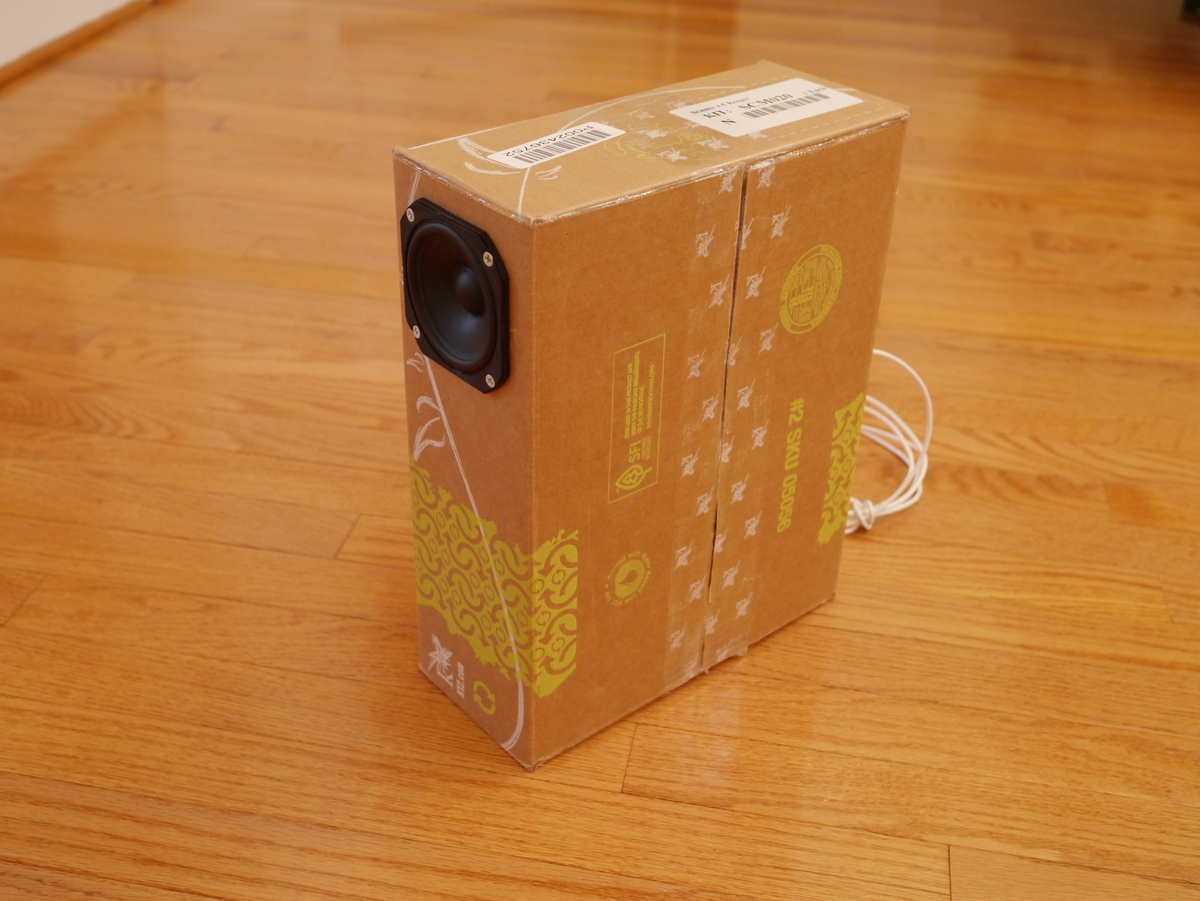
I can veneer with woodgrain particle board. I saw the cool looking record table/speaker stand. Symbol Audio | MODERN RECORD CONSOLE - they make some nice stuff. Yeah, I went to Cal a long time ago... good times
I am intrigued by the design of the box and thinking of making something similar by combining two MLTL's that I have already built end-to-end to get similar aspect ratio. I have two boxes each 4 in wide x 13 in tall x 10 in deep. Combined will be 26 in wide x 4 in tall x 10 in deep with drivers at ends and vents on back. It is made of cardboard but sounds great. (Post 1089 in foamcore thread).

I can veneer with woodgrain particle board. I saw the cool looking record table/speaker stand. Symbol Audio | MODERN RECORD CONSOLE - they make some nice stuff. Yeah, I went to Cal a long time ago... good times
Last edited:
- Status
- This old topic is closed. If you want to reopen this topic, contact a moderator using the "Report Post" button.
- Home
- Loudspeakers
- Full Range
- help me understand this enclosure